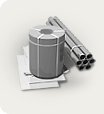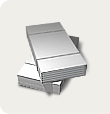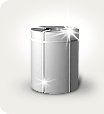ARIMITION-this is a popular building material due to its lightness, thermal conductivity and ease of installation. However, despite compression strength, aerated concrete has relatively low resistance to stretching and bending loads. That is why aerated concrete is a mandatory stage in the buildings of aerated concrete blocks.
Why do you need to reinforce aerated concrete
ALL-concrete wall reinforcement is performed to compensate for the internal stresses that arise due to:
-
temperature deformations;
-
Material shrinkage;
-
uneven loads from ceilings and roofs;
-
Seismic activity (in certain regions).
The absence of a reinforcing belt or its improper execution can lead to cracks, drawing walls and even a violation of the bearing capacity of the structure.
where and how reinforcing is
In buildings from aerated concrete, reinforcement is carried out in several key zones:
-
Horizontal reinforcement of the masonry-laying the reinforcement in the stroke between the rows of blocks, especially under the windows, openings, jumpers.
-
reinforcing belt (monolithic railway belt)-is arranged along the upper perimeter of the walls before laying the floor slabs or Mauerlat. This is a critical stiffness element.
-
Vertical reinforcement-is used for multi-storey construction or increased loads, for example, in places of conjugation of carrier walls.
Materials and Methods
For reinforcement, they are most often used:
-
Steel corrugated reinforcement (with a diameter of 8 to 14 mm);
-
Composite reinforcement;
-
welded nets;
-
Special reinforcing tapes (intra-system).
Installation includes stroke of the blocks, laying the reinforcement with a protective layer and the subsequent filling of the armopoyas of the concrete mixture. It is important to ensure a reliable connection between the elements of the structure, especially in the corners and at the joints of the walls.






